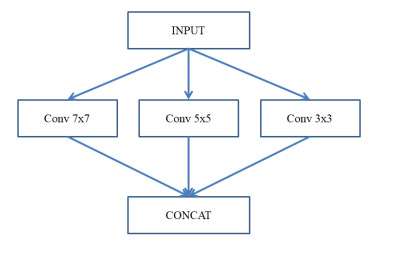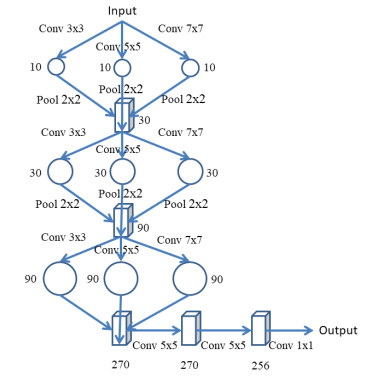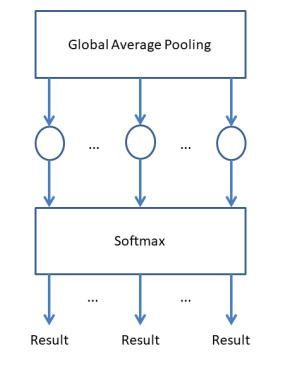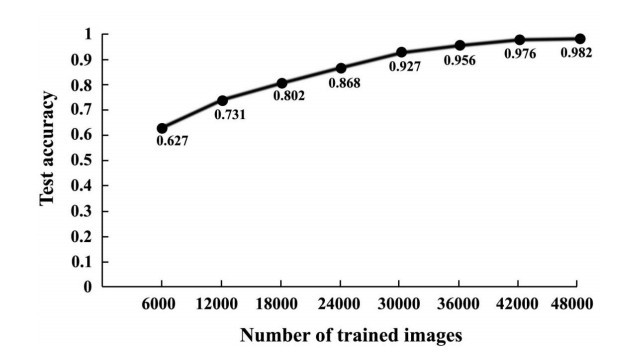|
[1]
|
D. S. Burstein, Conflating medical care with patient care, J. Grad. Med. Educ., 9 (2017), 671. doi: 10.4300/JGME-D-17-00458.1

|
|
[2]
|
E. Codier, D. D. Codier, Could emotional intelligence make patients safer, Am. J. Nurs., 117 (2017), 58-62.
|
|
[3]
|
R. Diver, T. Quince, S. Barclay, J. Benson, J. Brimicombe, D. Wood, et al., Palliative care in medical practice: medical students' expectations, BMJ Support Palliat Care, 8 (2018), 285-288. doi: 10.1136/bmjspcare-2017-001486

|
|
[4]
|
S. M. Anwar, M. Majid, A. Qayyum, M. Awais, M. Alnowami, M. K. Khan, Medical image analysis using convolutional neural networks: a review, J. Med. Syst., 42 (2018), 226. doi: 10.1007/s10916-018-1001-y

|
|
[5]
|
W. Luo, W. Yang, Y. Zhang, Convolutional neural network for detecting odontocete echolocation clicks, J. Acoust. Soc. Am., 145 (2019), 7. doi: 10.1121/1.5085647

|
|
[6]
|
M. Galgano, G. Toshkezi, X. Qiu, T. Russell, L. Chin, L. R. Zhao, Traumatic brain injury: current treatment strategies and future endeavors, Cell Transplant, 26 (2017), 1118-1130. doi: 10.1177/0963689717714102

|
|
[7]
|
A. Khellaf, D. Z. Khan, A. Helmy, Recent advances in traumatic brain injury, J. Neur., 266 (2019), 2878-2889. doi: 10.1007/s00415-019-09541-4

|
|
[8]
|
D. Najem, K. Rennie, M. Ribecco-Lutkiewicz, D. Ly, J. Haukenfrers, Q. Liu, et al., Traumatic brain injury: classification, models, and markers, Biochem. Cell Biol., 96 (2018), 391-406. doi: 10.1139/bcb-2016-0160

|
|
[9]
|
W. Lina, J. Ding, Behavior detection method of openpose combined with Yolo network, (2020), 326-330.
|
|
[10]
|
S. Sivamani, S. H. Choi, D. H. Lee, J. Park, S. Chon, Automatic posture detection of pigs on real-time using Yolo framework, Int. J. Res. Trends Innov., 5 (2020), 81-88.
|
|
[11]
|
M. Sarıgül, B. M. Ozyildirim, M. Avci, Differential convolutional neural network, Neur. Netw., 116 (2019), 279-287. doi: 10.1016/j.neunet.2019.04.025

|
|
[12]
|
P. Xuan, S. Pan, T. Zhang, Y. Liu, H. Sun, Graph convolutional network and convolutional neural network based method for predicting lncRNA-disease associations, Cells, 8 (2019).
|
|
[13]
|
K. Yasaka, H. Akai, A. Kunimatsu, S. Kiryu, O. Abe, Deep learning with convolutional neural network in radiology, Jpn. J. Radiol., 36 (2018), 257-272. doi: 10.1007/s11604-018-0726-3

|
|
[14]
|
A. O. Alia, M. L. Petrunich-Rutherford, Anxiety-like behavior and whole-body cortisol responses to components of energy drinks in zebrafish (Danio rerio), Peer J., 7 (2019), e7546. doi: 10.7717/peerj.7546

|
|
[15]
|
F. Barthels, J. Kisser, R. Pietrowsky, Orthorexic eating behavior and body dissatisfaction in a sample of young females, Eat. Weight Disord., 2020.
|
|
[16]
|
A. Mathis, P. Mamidanna, K. M. Cury, T. Abe, V. N. Murthy, M. W. Mathis, et al., DeepLabCut: markerless pose estimation of user-defined body parts with deep learning, Nat. Neurosci., 21 (2018), 1281-1289. doi: 10.1038/s41593-018-0209-y

|
|
[17]
|
E. Štefanová, P. Bakalár, T. Baška, Eating-disordered behavior in adolescents: associations with body image, body composition and physical activity, Int. J. Environ. Res. Public Health, 17 (2020).
|
|
[18]
|
E. Yilmaz, Influence of lubricating conditions on the two-body wear behavior and hardness of titanium alloys for biomedical applications, Comput. Methods Biomech. Biomed. Engin., 23 (2020), 1377-1386. doi: 10.1080/10255842.2020.1804882

|
|
[19]
|
M. Atzori, H. Müller, PaWFE: Fast signal feature extraction using parallel time windows, Front. Neur., 13 (2019), 74. doi: 10.3389/fnins.2019.00074

|
|
[20]
|
X. Fang, N. Han, J. Wu, Y. Xu, J. Yang, W. K. Wong, et al., Approximate low-rank projection learning for feature extraction, IEEE Trans. Neur. Netw. Learn. Syst., 29 (2018), 5228-5241. doi: 10.1109/TNNLS.2018.2796133

|
|
[21]
|
Q. Shi, Y. M. Cheung, Q. Zhao, H. Lu, Feature extraction for incomplete data via low-rank tensor decomposition with feature regularization, IEEE Trans. Neur. Netw. Learn. Syst., 30 (2019), 1803-1817. doi: 10.1109/TNNLS.2018.2873655

|
|
[22]
|
Z. Y. Zhang, D. D. Gui, M. Sha, J. Liu, H. Y. Wang, Raman chemical feature extraction for quality control of dairy products, J. Dairy Sci., 102 (2019), 68-76. doi: 10.3168/jds.2018-14569

|


















 DownLoad:
DownLoad: